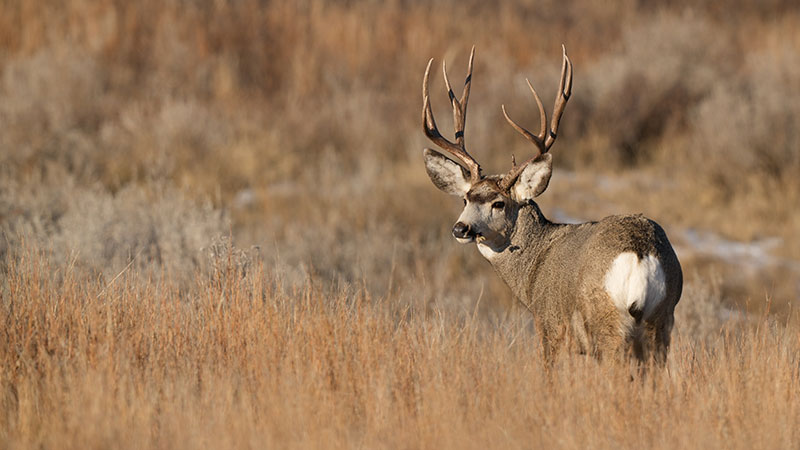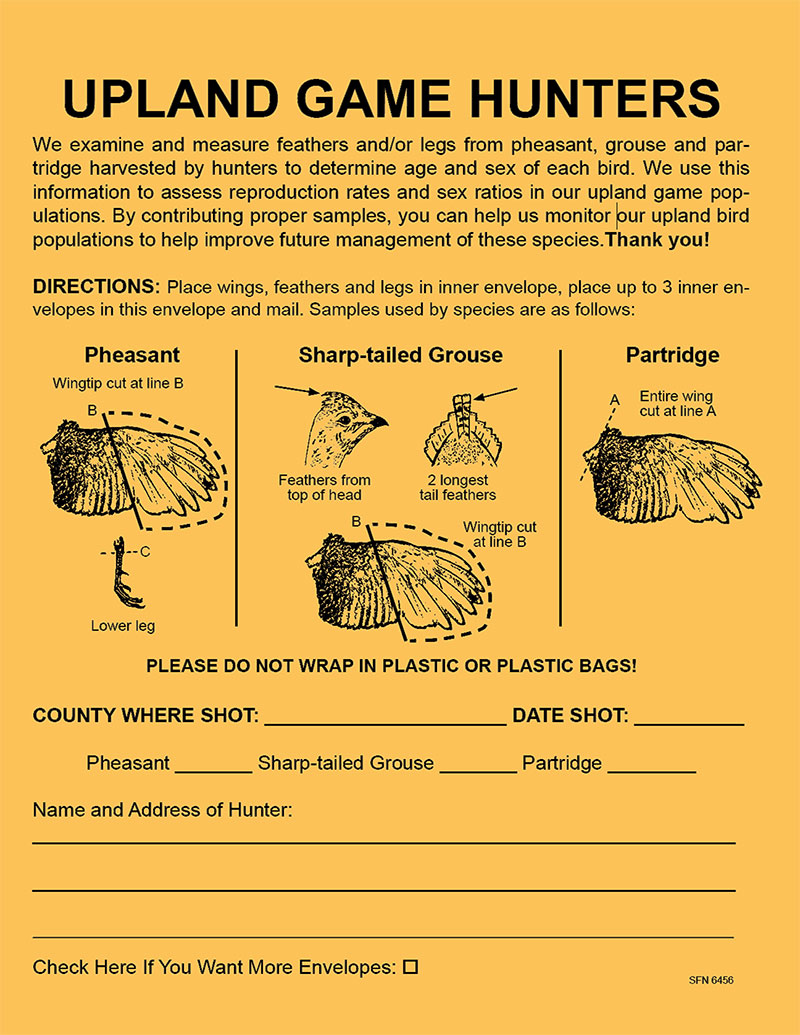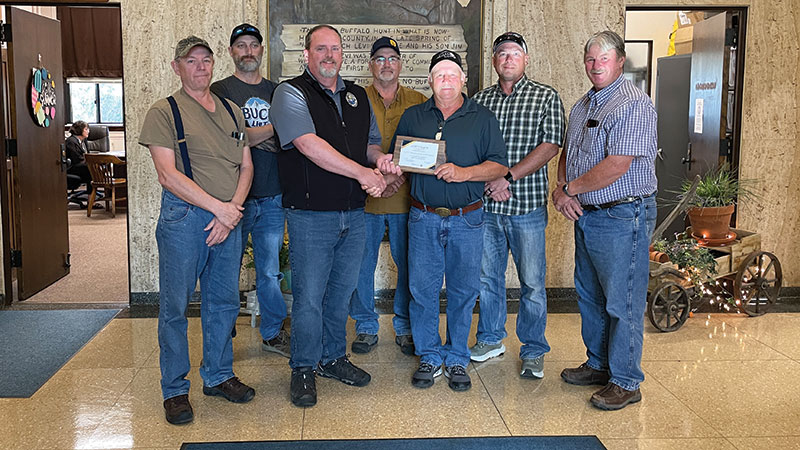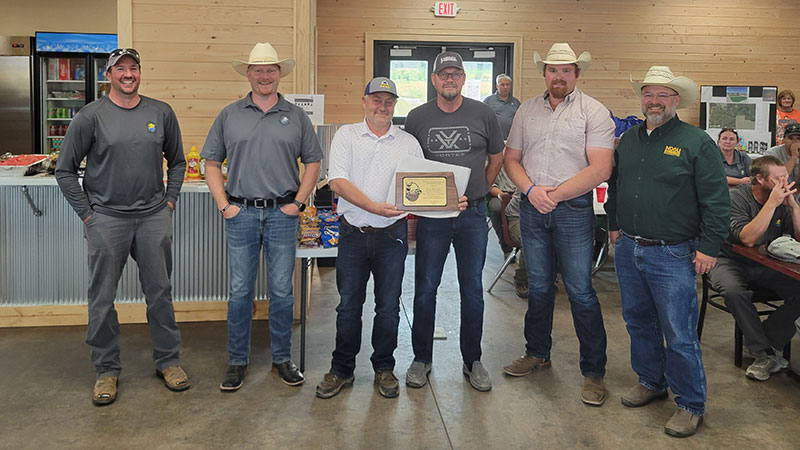
Buffaloberry Patch
New Hunting, Trapping Guide
Hunters and trappers can find the North Dakota 2024-25 Hunting and Trapping Guide, which includes upland game, migratory game bird and furbearer hunting/trapping regulations and other information, online. Printed guides are available at the usual license vendor locations.
The 50-plus page guide also features a colored duck identification guide, aquatic nuisance species information, Tom Roster’s Nontoxic Shot Lethality Table and more.
Record Walleye Production Boosts Fisheries
Walleye fingerling stocking wrapped up with Garrison Dam National Fish Hatchery setting a record with just short of 12 million fingerlings produced.
Distribution trucks traveled more than 12,000 miles over a two-week period in summer to stock the fish, according to Jerry Weigel, North Dakota Game and Fish Department fish production/development section supervisor.
When combined with fingerling production from Valley City National Fish Hatchery, 177 waters were stocked, providing a great boost in developing future fishing prospects across the state.
While producing nearly 12 million walleye fingerlings is significant for the one hatchery, Garrison Dam and Valley City combined efforts in 2017 to produce more than 12 million fingerlings.
“Traditionally, on large production years, significant numbers of walleye fingerlings would go to big systems like Lake Sakakawea, Lake Ashtabula and Stump Lake,” Weigel said. “This year, no walleyes went to those waters, given very strong survival from last year’s stockings. Just over 10 million fish went to up-and-coming smaller systems to enhance those fisheries along with taking advantage of rising lake levels at many prairie lakes due to the very wet spring.”
Each spring, walleye eggs collected by fisheries personnel are taken to Garrison Dam and Valley City national fish hatcheries where they are hatched. After hatching, the walleye fry are stocked into production ponds and after a month of growth, 1-inch or longer fingerlings are collected and stocked across the state.
“Stocking conditions in 2024 were optimal given the wet spring and early summer, and cooler than normal temps,” Weigel said. “The receiving waters were rich in invertebrates, critical food for the survival of the newly stocked walleye. Conditions are favorable for good survival and growth of young walleyes, which will continue to provide good fishing opportunities across the state for years to come.”
Duck Stamp Required
A federal duck stamp is required for waterfowl hunters 16 and older beginning. Waterfowl includes ducks, geese, swans, mergansers and coots.
This year’s 2024-25 federal duck stamp is available for electronic purchase online, or license vendors registered with the Department’s licensing system.
As a result of the Duck Stamp Modernization Act, the electronic stamp is now valid for the entire waterfowl hunting season. A physical stamp will be mailed in March 2025 to individuals who purchased the e-stamp.
Those interested in buying physical stamps can be purchased at many U.S. Postal Service offices or the Amplex website, and Amplex should be used for hunters wanting to support conservation by purchasing extra duck stamps.
The federal duck stamp costs $25. An additional $4 processing fee is added.
Get HIP Registered
Migratory bird hunters of all ages need to register with the Harvest Information Program prior to hunting ducks, geese, swans, mergansers, coots, cranes, snipe, doves and woodcock. Hunters must register in each state they are licensed to hunt.
Hunters can HIP certify when purchasing a license online.
Those who registered to hunt during the spring light goose conservation order in North Dakota do not have to register with HIP again, as it is required only once per year.
HIP registration is a cooperative program designed to determine a sample of hunters to measure harvest of migratory birds for management purposes.
WMA Equipment Restrictions
The North Dakota Game and Fish Department reminds hunters that tree stands, ground blinds and game cameras cannot be placed on state wildlife management areas prior to August 20.
Equipment set out prior to that date, or left on a WMA after January 31, is considered abandoned property and is subject to removal.
In addition, an equipment registration number, or the owner’s name, address and telephone number, must be displayed on all equipment requiring identification.
Owners can generate an equipment registration number by visiting My Account. One registration number will be issued that can be used on all equipment that requires identification.
Fall Fire Danger Index
As hunting seasons and other fall activities get underway, hunters and other outdoor enthusiasts need to be aware of the daily fire danger index.
There is a lot of fuel on the landscape, and hunters are urged to keep up with the daily rural fire danger index, which is issued by the National Weather Service, to alert the public to conditions that may be conducive to the accidental starting or spread of fires.
In addition, county governments have the authority to adopt penalties for violations of county restrictions related to burning bans. These restrictions apply regardless of the daily fire danger index and remain in place until each county’s commission rescinds the ban.
Hunters should consider bringing along a shovel, fire extinguisher, extra water and heavy fabric for putting out accidental fires. However, individuals who are not trained firefighters should not attempt to fight a fire that is out of control. Instead, contact the nearest rural fire department immediately.
Also, hunters should stay clear of tall vegetation when parking a vehicle.
The fire danger index can change daily depending on temperature, wind and precipitation forecasts. If the index reaches the high, very high or extreme category, open burning is prohibited; off-road travel with a motorized vehicle is prohibited, except for people engaged in a trade, business or occupation where it is required; and smoking is restricted to inside of vehicles, hard surface areas, homes or in approved buildings.
Birds With Bands
Hunters should check harvested migratory birds for bands this fall and report federal bands at reportband.gov.
In addition, the bird banding lab has a mobile-friendly reporting site that will aid hunters to report bands via mobile devices.
The band number, date and location of each recovery are needed. After the band information is processed, hunters can request a certificate of appreciation, and information about the bird will be returned in an email. Hunters can keep all bands they recover. Information received from hunters is critical for management of migratory game birds.
Sandhill Crane Permits Required
North Dakota’s sandhill crane season opens September 14 and continues through November 10.
In addition to other licenses required, resident hunters need a $10 crane permit, while nonresidents need a $30 permit. Hunters can apply online. Harvest Information Program certification is required.
PLOTS Guide Online
The North Dakota Game and Fish Department’s Private Land Open To Sportsmen Guide for 2024 is now available online.
The guide will feature about 836,000 PLOTS acres. Because PLOTS tracts can be added or removed from the program throughout the year, hunters are encouraged to use the Game and Fish mobile app or other mapping and browser-based applications to locate and identify these tracts. Map sheets are updated weekly on the department’s website.
The PLOTS guide features maps highlighting these walk-in areas, identified in the field by inverted triangular yellow signs, as well as other public lands.
To maximize the use of hunter dollars, fewer signs will be placed on PLOTS tracts in the future. The cost savings will be directed to the addition of more habitat and access.
The free printed PLOTS guides will be available in late August at most license vendors and other locations throughout the state. The guides are not available by mail, so hunters will have to pick one up at a local vendor or Game and Fish offices, or print individual maps from the website.
Pull to the Right
North Dakota hunters need to be cautious of farm, ranch and other traffic when traveling on rural roads.
Fall is a busy time in the state as farmers and ranchers are harvesting crops, moving cattle, hauling bales and moving heavy machinery. Knowing this, hunters driving around on country roads should slow down when meeting another vehicle and pull well to the right when topping a hill.
To maintain positive landowner/hunter relations, Game and Fish Department officials said hunters should move to the right side of the road to allow wide farm vehicles to pass, park vehicles in a place that will not block a roadway, field approach or gate, pick up trash and empty shells, and not clean game in the road ditch or approach.
Watchable Wildlife Photo Contest
Photographers interested in sending photos for the North Dakota Game and Fish Department’s Watchable Wildlife Photo Contest are asked to follow the guidelines for submitting their work.
Photographers should go to the Game and Fish Department’s website. Then it is a matter of providing some pertinent information about the photo and uploading it. Doing so helps both with ease of submitting photos for the photographer and managing those images for Department staff.
The contest is now open and the deadline for submitting photos is Oct. 1.
The contest has categories for nongame and game species, as well as plants/insects. An overall winning photograph will be chosen, with the number of place winners in each category determined by the number of qualified entries.
Contestants are limited to no more than five entries. Photos must have been taken in North Dakota.
By submitting an entry, photographers grant permission to Game and Fish to publish winning photographs in North Dakota OUTDOORS, and on the Department’s website.
Chronic Wasting Disease Proclamation
Big game hunters should note the 2024 chronic wasting disease proclamation for baiting and transportation requirements for deer, elk and moose as a precaution against the spread of chronic wasting disease.
Noteworthy items include:
- Deer gun hunting unit 2B is removed from the list of units where baiting is restricted after the minimum sampling requirement was met with no positive detections.
- No new units have been added to the baiting restriction list for 2024-25.
- Hunters are prohibited from transporting into North Dakota the whole carcass or parts, except the lower-risk portions, of deer, elk, moose or other members of the cervid family harvested outside of North Dakota.
State Game and Fish Department officials will conduct surveillance of the state by region on a four-year rotation. This year, the CWD surveillance effort will consist of deer gun units in northeastern North Dakota. Outside of this area, hunters can still have their animal tested by taking it to a Game and Fish district office, any deer head collection site (primarily located in the surveillance area) or using a mail-in self-sampling kit. A unit outside the annual surveillance zone is still eligible to have a baiting restriction removed if the sampling goal is met or can be added as a restricted unit if a positive is found.






